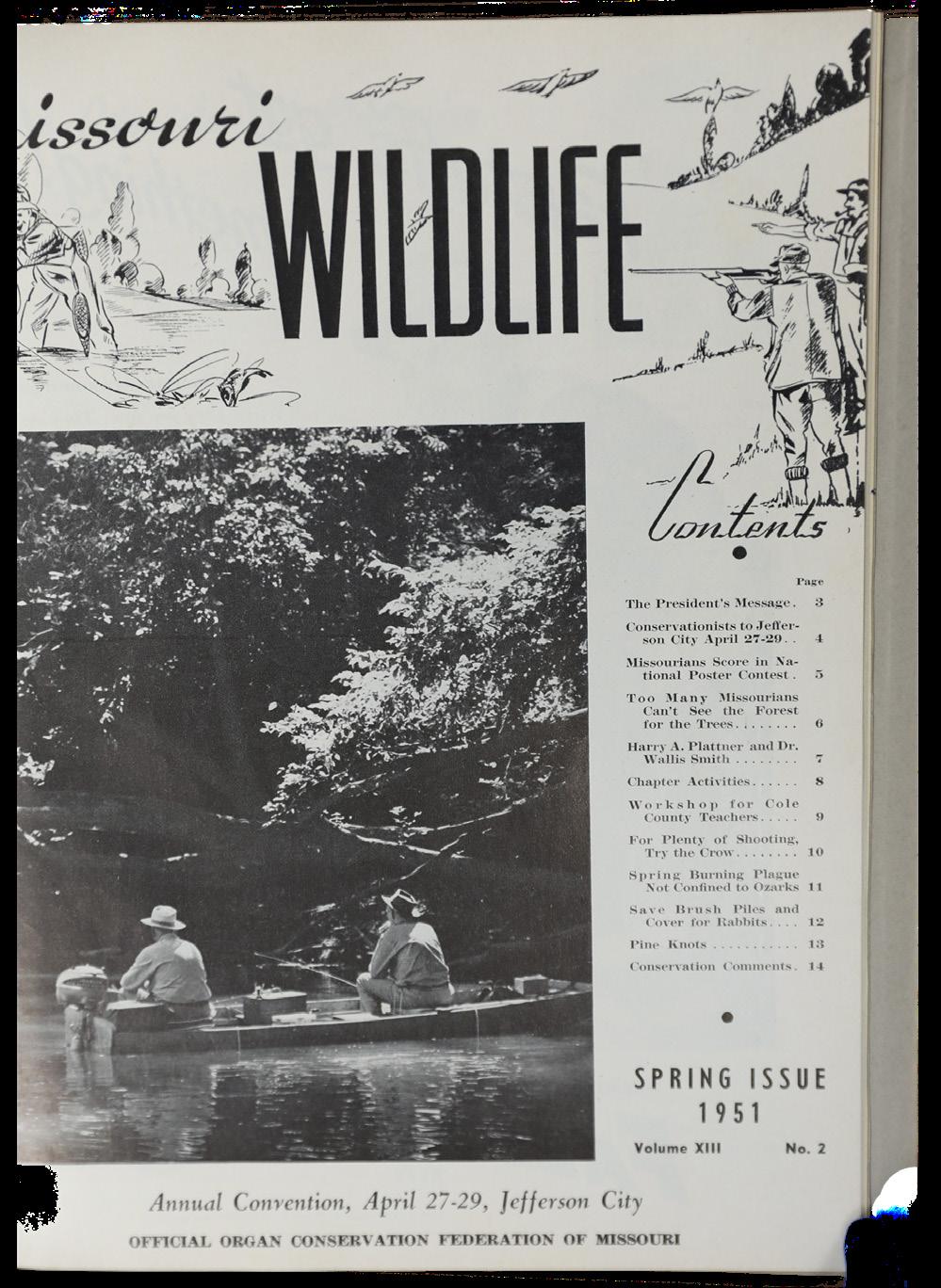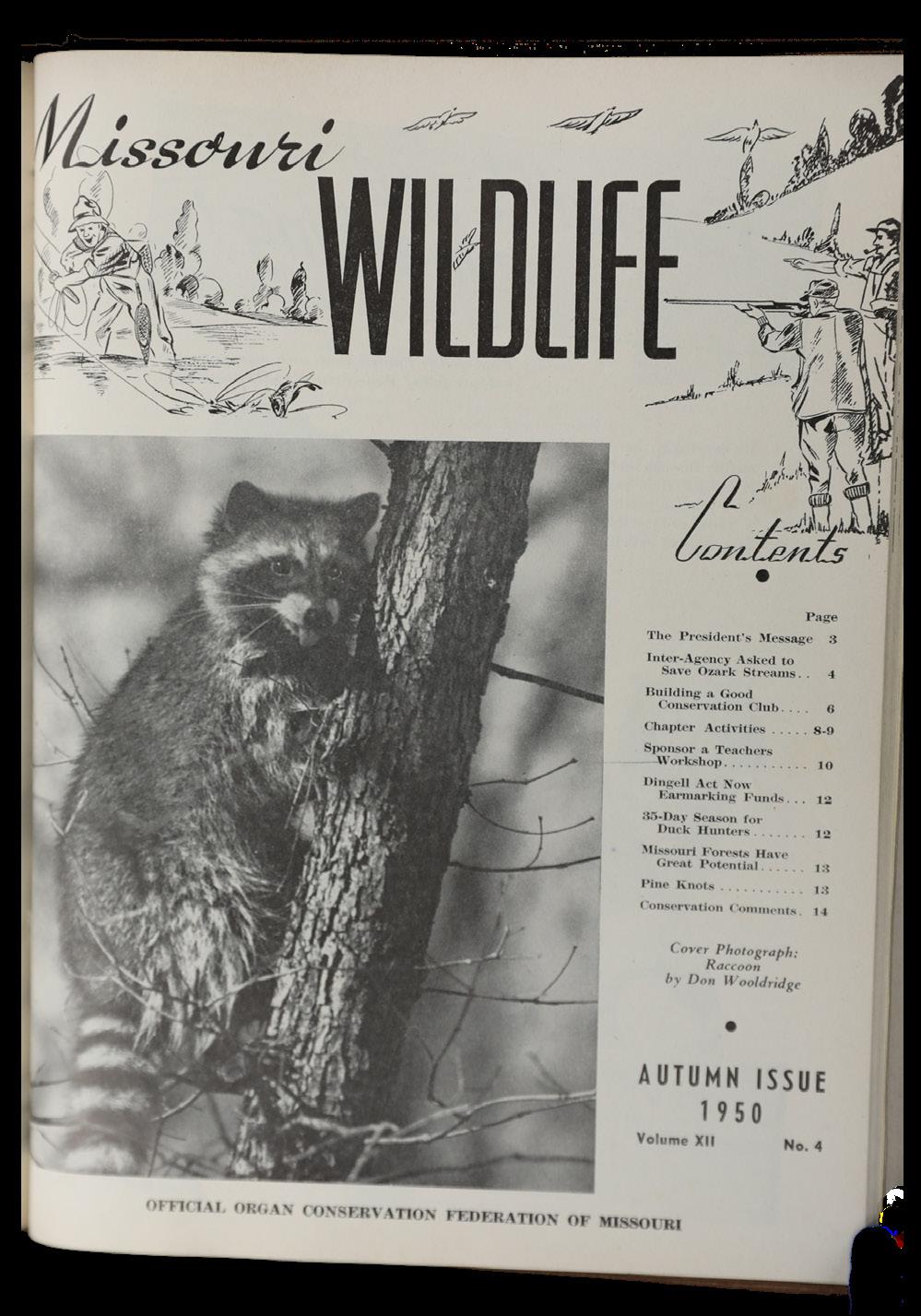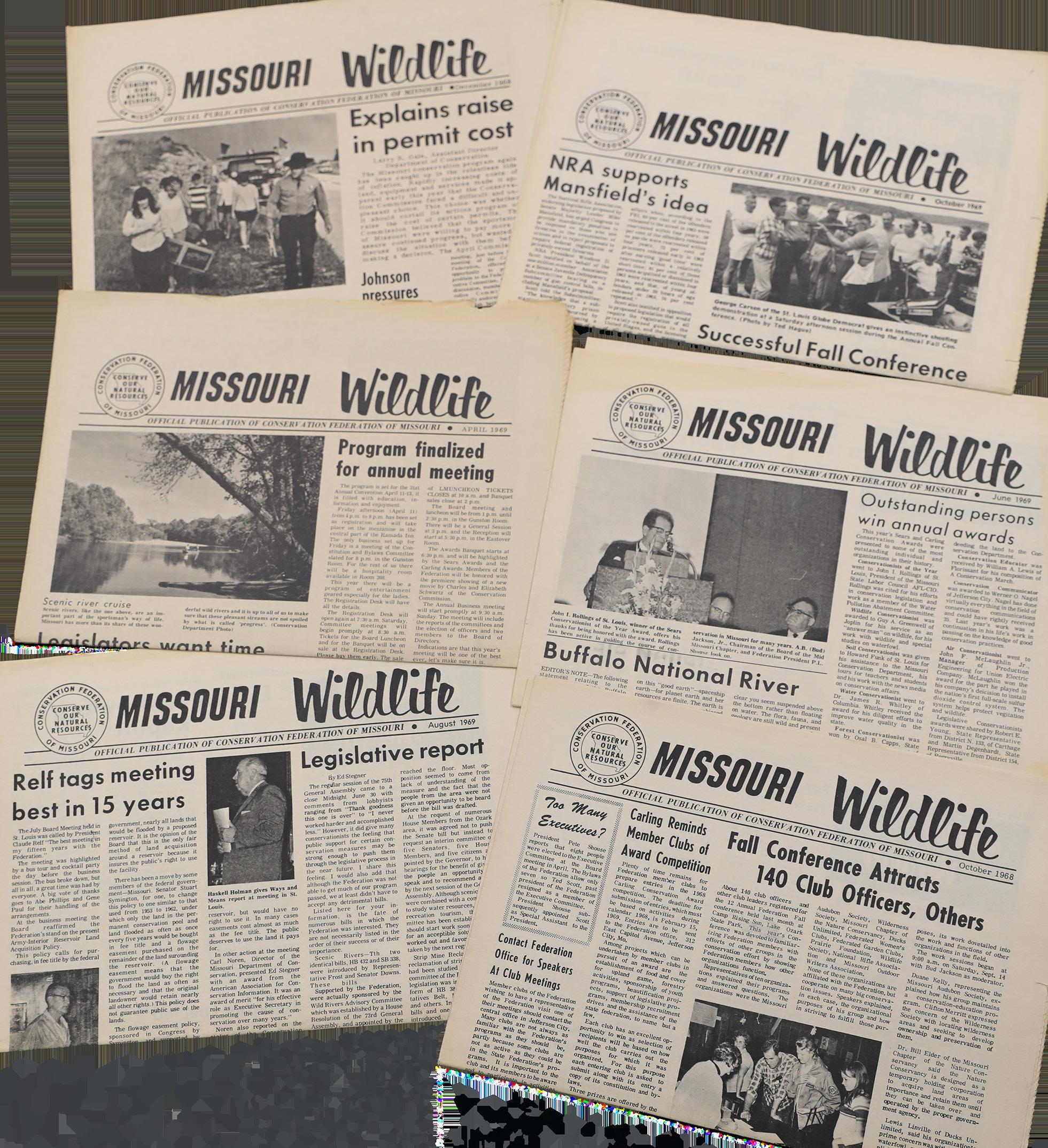
6 minute read
Conservation Through the Ages
In 1935, sportsmen from throughout Missouri came together at the Tiger Hotel in Columbia, Missouri to form the Conservation Federation of Missouri (CFM). They organized with the purpose of taking conservation out of politics. Their initiative petition campaign resulted in the creation of the Missouri Department of Conservation, a non-political conservation agency that has been a model for other states.
Through the years, CFM has prevailed as one of the most important conservation entitites in the state. CFM consistently fights to protect Missouri's outdoors and stands up for the best insterests of our members.
Let't take a walk down memory lane and re-live some of the highlights of the past 85 years of CFM.
1930's
On September 10, 1935, 75 men met in Columbia to discuss the sad state of wildlife and resources in Missouri. They became the founders of the Conservation Federation of Missouri.

1936: Proposition No. 4 passed, which took wildlife regulation out of politics by establishing a bi-partisan commission.
“In the field of state administration (of wildlife), Missouri is the most outstanding. The action of the people in adopting the amendment (No. 4) is unprecedented. I can safely predict that Missouri in a few years will be in the front rank as a conservation state. “ Ira N. Gabrielson, Chief, U.S. Biological Survey
1940's

Governor Forrest Donnell (1941-1945)
In 1940, a proposal to repeal Proposition No. 4 was on the ballot. It aimed to repeal the wildlife and forestry code and all laws regulations established by the Conservation Commission.
CFM fought hard and was able to uphold Proposition No. 4 by


709,421 votes to 359,628.
1950's
CFM continues standing up for conservation and Missouri's resources at every opportunity.
1950: Migratory waterfowl hunting regulations set by the U.S. Dept. of Interior announces a 35-day season for duck hunters.


1951: The Dingell Act started earmarking funds from fishing licenses.
Cecil Veatch, Past President
1960's


The 1960's brought new excitement. Ecology is a fairly new science, and many are focused on learning about it. Boating is also fast becoming one of the most popular forms of family recreation.
1968: 12th Annual Fall Conference was held in September at Lake Ozark State Park.
1969: Ten special trout management areas got more frequent stockings of rainbows.
1968: Conservation Commission approved longest deer season yet, lasting 12 days.
1969: Missouri bow hunters enjoyed a long (3 month) deer season; with the 1968 hunters killing 559 deer statewide.
1976: CFM spearheaded successful passage of the conservation sales tax to create stable broad-based funding for Missouri’s forests, fauna and fish.
1977: CFM was honored as National Wildlife Federation's Organization of the Year for their efforts to broaden Missour's conservation revenue base.
1978: Voters reject amendment which sought political control of conservation funds in Amendment 21.
1970's

“In my sixteen years with the Federation, I cannot recall a session of our General Assembly when as much legislation was introduced which affects the conservation program. For several days I was hardly in my office…with as many as five (hearings) being scheduled in one day.
Ed Stegner, Former Executive Secretary

1980's
"Usually, when the best interests of wildlife and the economic interests of people come in conflict, the wildlife coms out second best. Hopefully though, we are beginning to see a trend in changing attitudes. People are starting to realize that the presence of wildlife adds to human satisfaction and welfare, and they are doing much to preserve wildlife habitat."
Charles Davidson, Former CFM Editor & Asst. Director
1980: Federation supports Commission payments to counties for public lands in Amendment No. 4.
1981: Two Representatives in the Missouri legislature want conservation sales tax repealed.

1986 Federation opposes renewed efforts to divert Parks, Soils and Conservation Funds.

1990's

1995: Missouri sues EPA over Clean Air Act Constitutionality
1995: Pallid Sturgeon turning up in Missouri River
1997: Zebra Mussel could spell trouble for Mississippi River
“High schools all over the state are getting involved in water quality monitoring through Stream Teams. Education is the key to environmental awareness. As more and more children are educated in conservation and environmental practices the ecological future of our planet becomes more secure.” Mark Van Patten, Stream Team Founder
2000's
“I am a believer in preparing for the future. Man, animals, and plants act to sustain their existence – balancing nature’s economy. It does not take much to push the balance back out of equilibrium. The Federation membership advocates balanced conservation ethics when passing a resolution to recommend the correction of a stream pollution problem, addressing Chronic Wasting Disease (CWD), or voting to support a Conservation Leadership Corps comprised of high school and college students. “ Gary Van De Velde, CFM Past President

2002: Otter Man Glenn Chambers takes top honor in CFM’s Conservationists of the Year Awards. (Glenn Chambers famous photo of geese pictured to the left.)

2007: Taum Sauk Settlement Boost Missouri State Parks.
2009: Birds’ movements reveal global warming threat.
2010's
2016: Parks and Soils Sales Tax passes Missouri Voters by 80%.

"As our world’s population continues to expand, more and more strain is being placed on natural resources. Some nations, and even states within our own country, are in dire times. Here in Missouri, we have faced many challenges from those who would exploit the collective good of public resources for personal gain. But because of our strong conservation ethos, Missourians have been able to stave off such foolish attempts. I certainly don’t believe that would be the case if not for the passion of the men and women who are the Conservation Federation of Missouri.”
Brandon Butler CFM Executive Director 2014-2018
“Missourians are very lucky having so many diverse opportunities to spend time outdoors to discover what that rich outdoor heritage truly means. The beauty of that uniqueness and the beauty of CFM coincide nicely together because we support so many different types of outdoor passions and recreational opportunities.” Tyler Schwartze, Current CFM Executive Director







